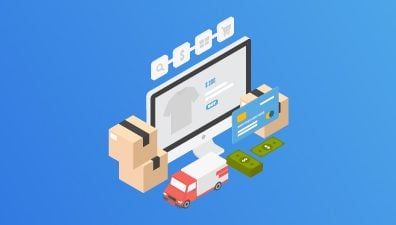Omnichannel marketing is a holistic approach that ensures a cohesive and unified customer experience across all digital and physical touchpoints. Unlike traditional multichannel marketing, which often operates in silos, omnichannel marketing integrates various channels to provide a seamless journey for the customer.
Whether a customer is shopping online via a website, engaging through social media, or visiting a physical store, the benefits of omnichannel marketing ensure that each interaction is connected and consistent. This approach not only enhances customer satisfaction but also builds stronger brand loyalty and trust.
Table of Contents
Understanding Omnichannel Marketing
Omnichannel marketing is a sophisticated strategy designed to create a seamless and integrated customer experience across multiple touchpoints. It involves unifying various channels such as online, offline, mobile, and social media into a cohesive and consistent journey that meets customers where they are, offering a fluid transition from one platform to another. The benefits of omnichannel marketing are manifold, as this approach allows businesses to maintain a continuous and personalized interaction with their audience, fostering loyalty and enhancing customer satisfaction.
At its core, omnichannel marketing revolves around the principle of customer-centricity. Unlike traditional multichannel marketing, which operates in silos and often results in disjointed customer experiences, omnichannel marketing ensures that all channels work in harmony. This integration enables businesses to deliver a consistent message and personalized content tailored to individual preferences, regardless of the channel a customer chooses to engage with.
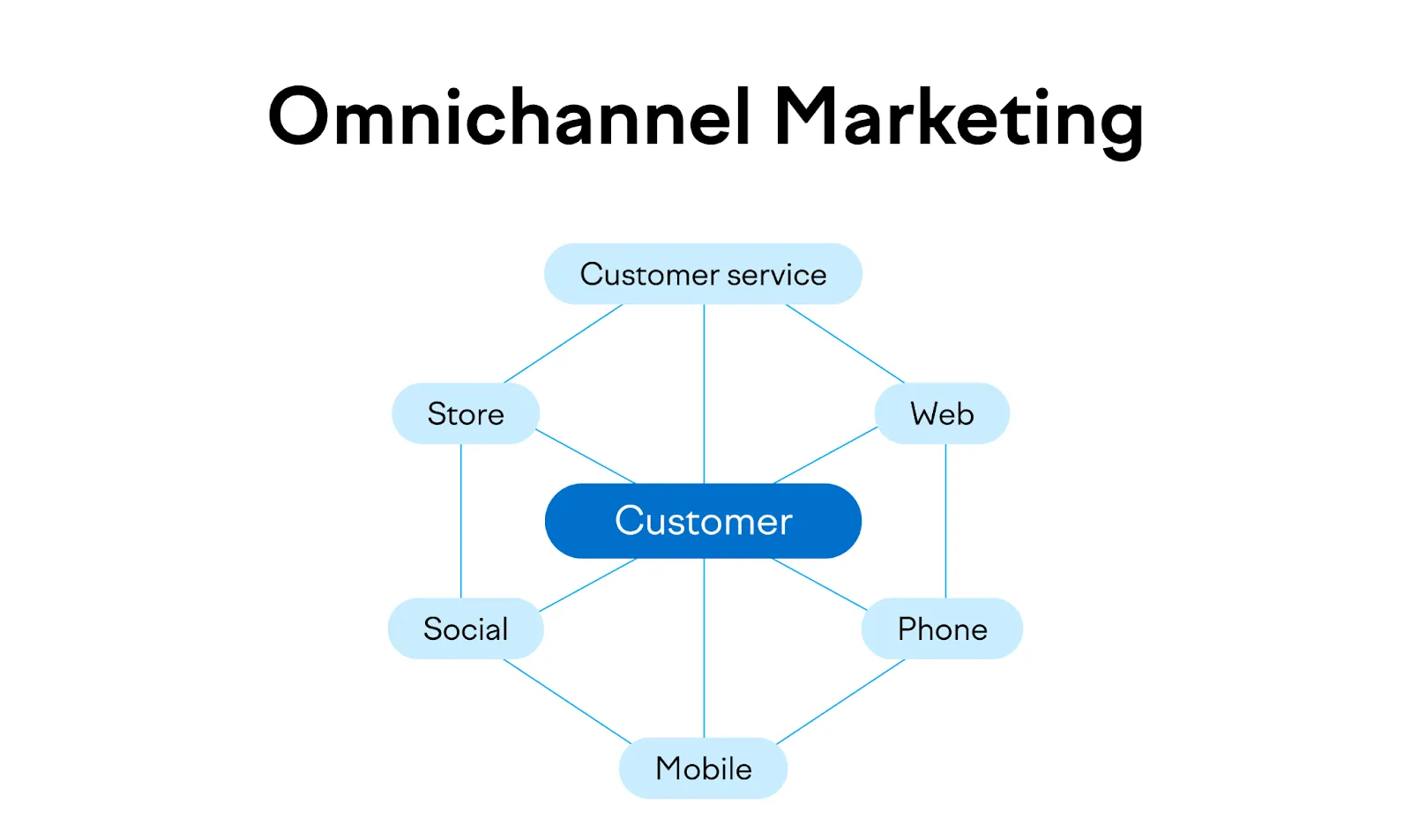
The benefits of omnichannel marketing are not limited to enhancing customer experience; they also extend to operational efficiencies and increased revenue. By streamlining processes and reducing redundancies, businesses can achieve significant cost savings. Moreover, the ability to cross-sell and upsell across multiple channels leads to higher sales and revenue growth.
The Core Benefits of Omnichannel Marketing
Enhanced Customer Experience
The enhanced customer experience is one of the most significant benefits of omnichannel marketing. By focusing on seamless integration across various channels, personalized customer interactions, and consistent brand messaging, businesses can create a unified and engaging customer journey. These elements work together to build stronger relationships with customers, increase satisfaction, and drive loyalty.
Seamless Integration Across Various Channels
One of the primary omnichannel marketing benefits is the seamless integration across multiple channels. This integration ensures that customers have a consistent and uninterrupted experience whether they are shopping online, browsing through a mobile app, interacting on social media, or visiting a physical store. By connecting all touchpoints, businesses can provide a fluid transition between channels, eliminating any friction that might disrupt the customer journey.
For example, a customer might start their shopping experience by researching products on a brand’s website, then check availability through a mobile app, engage with customer service on social media for inquiries, and finally complete their purchase in a physical store. This cohesive experience is only possible with an omnichannel approach, which integrates all platforms and channels into a single, unified system. The seamless integration across various channels not only enhances the customer experience but also builds trust and loyalty, as customers feel understood and valued by the brand.
Personalized Customer Interactions
Another crucial aspect of the benefits of omnichannel marketing is the ability to offer personalized customer interactions. By leveraging data from multiple sources, businesses can gain deep insights into customer preferences, behaviors, and purchasing patterns. This data allows for the creation of targeted marketing campaigns and personalized recommendations that resonate with individual customers.
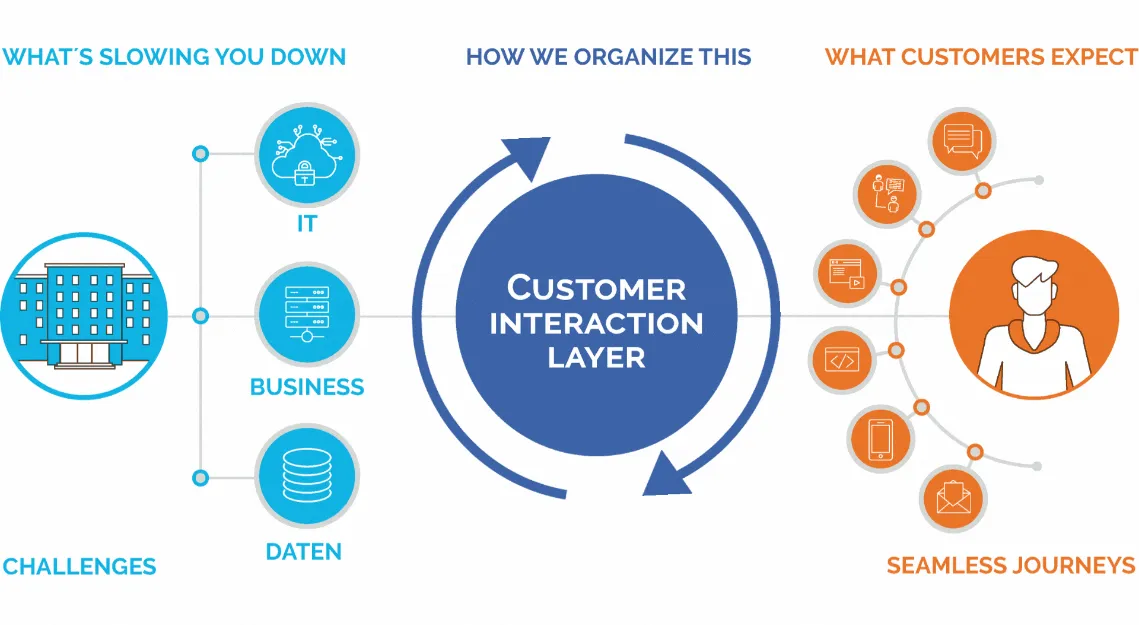
Personalization can take many forms, from customized email marketing and product recommendations based on past purchases to personalized content on websites and tailored promotions. By delivering relevant and timely messages, businesses can engage customers more effectively and foster a sense of personal connection. This level of personalization is a key advantage of omnichannel marketing, as it increases the likelihood of conversion and customer retention.
Consistent Brand Messaging
Consistency in brand messaging across all channels is another fundamental benefit of omnichannel marketing. Maintaining a unified brand voice and message is essential for building brand recognition and trust. Customers expect to receive the same level of service and quality of information, regardless of the platform they use.
Omnichannel marketing ensures that all communications are aligned with the brand’s values and messaging, creating a cohesive experience. Whether through social media posts, email newsletters, or in-store interactions, the brand message remains consistent and reinforces the company’s identity. This consistency helps in establishing a strong market presence and differentiates the brand from competitors.
Case Study: Ulta
A compelling case study that illustrates the omnichannel marketing benefits is that of Ulta Beauty. Ulta implemented a comprehensive omnichannel strategy to enhance the customer experience and drive loyalty. By integrating their online and offline channels, Ulta created a seamless shopping experience that allowed customers to browse products online, check inventory at their nearest store, and even book in-store beauty services through their mobile app.

Ulta’s loyalty program, Ultamate Rewards, further personalized the customer experience by offering tailored promotions and recommendations based on individual shopping behavior. This level of personalization, combined with consistent brand messaging across all touchpoints, resulted in increased customer satisfaction and loyalty. Ulta saw a significant rise in both online and in-store sales, demonstrating the powerful advantages of omnichannel marketing in enhancing the customer experience.
Increased Customer Retention and Loyalty
One of the most compelling benefits of omnichannel marketing is its ability to significantly increase customer retention and loyalty. By creating a unified customer journey, building trust and brand loyalty, and effectively using customer data for retention strategies, businesses can cultivate long-lasting relationships with their customers. These efforts result in higher retention rates and a loyal customer base that continuously engages with the brand.
Creating a Unified Customer Journey
Creating a unified customer journey is central to the advantages of omnichannel marketing. This approach ensures that customers have a consistent and cohesive experience across all touchpoints, whether they are interacting with the brand online, through a mobile app, or in a physical store. By integrating these channels, businesses can provide a seamless transition for customers as they move from one platform to another.
For instance, a customer might begin their journey by researching products on a company’s website, adding items to their cart through a mobile app, and completing the purchase in-store. The key to this unified journey is the ability to track and remember customer interactions across all channels. This seamless experience not only enhances customer satisfaction but also encourages repeat business, as customers are more likely to return to a brand that offers a hassle-free and enjoyable shopping experience.
Building Trust and Brand Loyalty
Trust and brand loyalty are crucial components of the benefits of omnichannel marketing. By delivering consistent and high-quality interactions across all channels, businesses can build trust with their customers. Consistency in messaging, product offerings, and customer service reinforces the brand’s reliability and professionalism.
Moreover, omnichannel marketing allows businesses to engage with customers in a more personalized manner. Personalized communication, such as tailored emails and targeted advertisements based on previous purchases, shows customers that the brand understands and values their preferences. This personalized approach not only enhances the customer experience but also fosters a deeper emotional connection with the brand, leading to increased loyalty.
Effective Use of Customer Data for Retention Strategies
One of the key advantages of omnichannel marketing is the ability to collect and analyze customer data from various touchpoints. This comprehensive data provides valuable insights into customer behavior, preferences, and purchasing patterns, which can be used to develop effective retention strategies.
For example, businesses can identify customers who have not made a purchase in a while and target them with special promotions or personalized offers to re-engage them. Additionally, by analyzing purchasing patterns, companies can create loyalty programs that reward customers for repeat purchases and long-term engagement. These data-driven strategies not only help retain existing customers but also increase their lifetime value.
Case Study: Sephora
Sephora is a prime example of a brand that has mastered the omnichannel approach, demonstrating the tangible benefits of omnichannel marketing in achieving high customer retention rates. By integrating their online and offline channels, Sephora provides a seamless shopping experience for their customers. Their Beauty Insider loyalty program is a key component of this strategy, offering personalized recommendations, exclusive promotions, and rewards for both in-store and online purchases. This unified experience ensures that customers receive consistent and relevant interactions across all touchpoints, significantly contributing to Sephora’s high customer retention rates.
Sephora’s omnichannel strategy leverages customer data to deliver highly personalized interactions. By analyzing customers’ past purchases, preferences, and behaviors, Sephora can tailor product recommendations and marketing messages to individual needs. This level of personalization extends to their mobile app, website, and physical stores, creating a cohesive and engaging customer journey. For example, a customer might receive a personalized email with product recommendations based on their recent online browsing history, which they can then explore further in the mobile app or in-store. This integrated approach not only enhances the customer experience but also builds trust and loyalty.

Additionally, Sephora’s consistent brand messaging across all channels reinforces their identity and builds a strong emotional connection with customers. Whether through social media campaigns, email marketing, or in-store experiences, Sephora maintains a unified brand voice that resonates with their audience. This consistency, combined with personalized interactions and a seamless customer journey, exemplifies the advantages of omnichannel marketing in driving customer retention and loyalty. As a result, Sephora has successfully cultivated a loyal customer base that continues to engage with the brand across multiple channels, illustrating the powerful impact of omnichannel marketing on customer retention.
Higher Revenue and Sales
One of the most significant benefits of omnichannel marketing is its ability to drive higher revenue and sales. By leveraging improved conversion rates across channels, upselling and cross-selling opportunities, and successful case studies of revenue growth, businesses can harness the full potential of omnichannel strategies to boost their financial performance. These efforts not only enhance the customer experience but also lead to substantial increases in sales and profitability.
Improved Conversion Rates Across Channels
The advantages of omnichannel marketing are clearly demonstrated through improved conversion rates across various channels. Omnichannel marketing ensures that customers have a seamless and consistent experience, regardless of the platform they use. This cohesive approach reduces friction in the buying process, making it easier for customers to complete their purchases.
For example, customers who start their shopping journey on a mobile app can seamlessly continue on a desktop or in a physical store without losing their progress or having to re-enter information. This fluidity increases the likelihood of completing a purchase. Furthermore, personalized marketing efforts, such as targeted emails and customized product recommendations, based on data collected from multiple touchpoints, increase the relevance of marketing messages and, consequently, conversion rates. By creating a more intuitive and engaging shopping experience, businesses can significantly boost their conversion rates and overall sales.
Upselling and Cross-Selling Opportunities
Another key benefit of omnichannel marketing is the ability to maximize upselling and cross-selling opportunities. By having a comprehensive view of customer behavior and preferences across all channels, businesses can identify opportunities to introduce additional products and services that complement the customer’s current selections.
For instance, if a customer is purchasing a laptop online, the website might recommend accessories such as a mouse, keyboard, or software that enhances the laptop’s functionality. Similarly, in a physical store, sales associates equipped with customer data can suggest relevant add-ons based on the customer’s purchase history. This personalized approach to upselling and cross-selling not only increases the average order value but also enhances the customer experience by providing tailored recommendations that meet their specific needs.
Case Study: Home Depot
A compelling case study that highlights the benefits of omnichannel marketing in driving revenue growth is that of Home Depot. Home Depot implemented an omnichannel strategy to provide a seamless shopping experience for their customers, whether they were shopping online, via mobile, or in-store. By integrating their digital and physical channels, Home Depot was able to offer services such as Buy Online, Pick Up In-Store (BOPIS), and Buy Online, Ship to Store (BOSS), which significantly enhanced convenience for their customers.
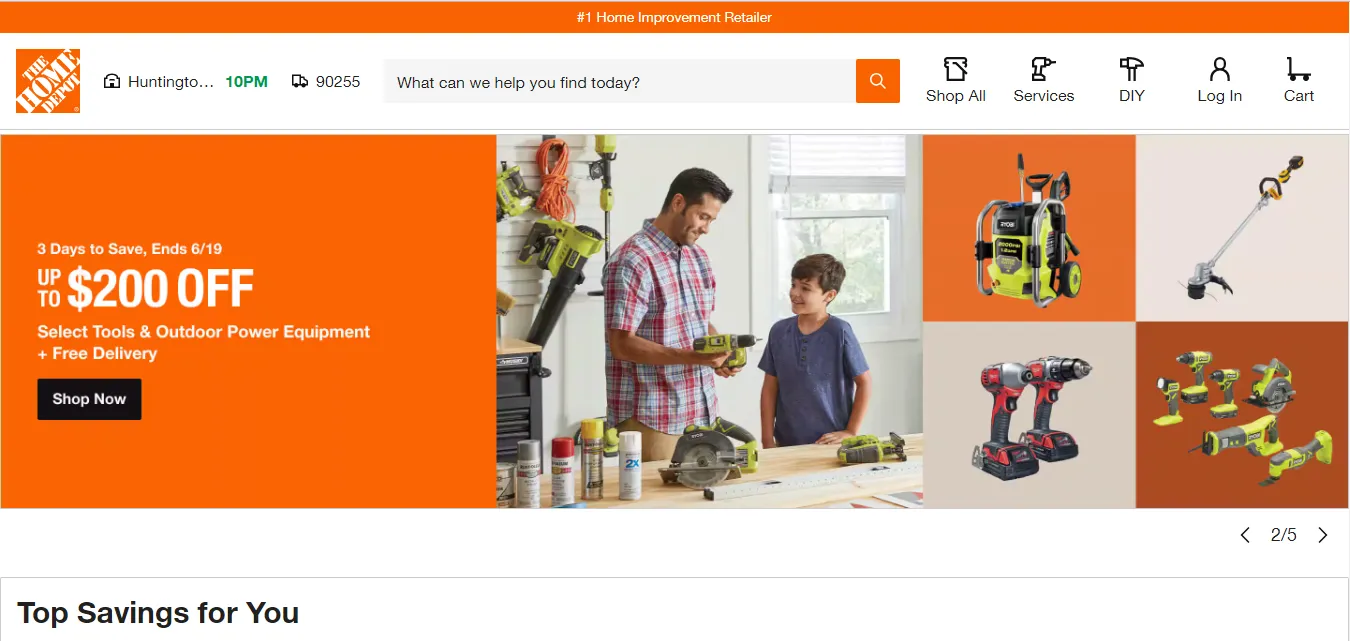
The introduction of these services led to a substantial increase in both online and in-store sales. Customers appreciated the flexibility of being able to order products online and pick them up at their convenience, often making additional purchases when they visited the store. This seamless integration of channels not only improved the customer experience but also boosted Home Depot’s revenue. In fact, the company reported that customers who used the BOPIS service tended to spend more overall, both online and in-store, demonstrating the advantages of omnichannel marketing in driving higher sales.
Moreover, Home Depot leveraged customer data to enhance its marketing efforts. By analyzing data from various touchpoints, the company was able to create personalized marketing campaigns that targeted customers with relevant offers and recommendations. This data-driven approach not only increased the effectiveness of their marketing efforts but also improved customer satisfaction and loyalty. As a result, Home Depot saw significant revenue growth, underscoring the powerful impact of omnichannel strategies on business performance.
Better Data Collection and Insights
One of the most profound benefits of omnichannel marketing is the ability to collect and analyze comprehensive customer data across all touchpoints. This integrated approach provides businesses with a holistic view of their customers, leading to improved data accuracy and analytics. By leveraging these insights, companies can make data-driven decisions that enhance customer experience, optimize marketing strategies, and drive business growth. This section explores how omnichannel marketing facilitates better data collection and insights, supported by a case study demonstrating the power of data-driven decision-making.
Comprehensive Customer Data Across All Touchpoints
The advantages of omnichannel marketing include the ability to gather detailed customer data from various touchpoints, such as online interactions, mobile app usage, social media engagement, and in-store visits. This comprehensive data collection allows businesses to create a unified profile for each customer, capturing their behavior, preferences, and purchasing patterns.
For example, a customer might browse products on a website, add items to their cart via a mobile app, engage with customer support on social media, and complete the purchase in a physical store. By integrating data from these diverse interactions, businesses can gain a 360-degree view of the customer journey. This holistic perspective enables companies to understand how different channels contribute to customer behavior and identify opportunities to enhance the overall experience.
Improved Data Accuracy and Analytics
Another significant benefit of omnichannel marketing is the improvement in data accuracy and analytics. When data is collected from multiple sources and integrated into a single system, it reduces the likelihood of errors and discrepancies that often arise from siloed data management. This accurate and reliable data forms the foundation for robust analytics, allowing businesses to derive meaningful insights and trends.
Advanced analytics tools can process and analyze this data to uncover patterns and correlations that may not be immediately apparent. For instance, businesses can identify which marketing channels are most effective in driving conversions, which customer segments are the most profitable, and which products are frequently purchased together. These insights enable companies to refine their marketing strategies, allocate resources more efficiently, and tailor their offerings to meet customer needs better. The advantages of omnichannel marketing in providing accurate and actionable insights cannot be overstated, as they empower businesses to make informed decisions that drive growth.
Case Study: Starbucks
A compelling case study that illustrates the benefits of omnichannel marketing in data-driven decision-making is that of Starbucks. Starbucks has successfully leveraged omnichannel marketing to collect comprehensive customer data across various touchpoints, including its mobile app, website, and physical stores. This data integration has allowed Starbucks to create a seamless and personalized customer experience, significantly enhancing its marketing efforts.
Starbucks’ mobile app plays a crucial role in their omnichannel strategy. The app not only facilitates mobile ordering and payments but also integrates the Starbucks Rewards loyalty program. By tracking customer purchases and preferences through the app, Starbucks can gather valuable data on individual customer behavior. This data is then used to personalize offers and recommendations, ensuring that customers receive relevant promotions based on their past interactions and preferences.

The insights gained from this comprehensive data collection have enabled Starbucks to make data-driven decisions that optimize its marketing strategies. For example, Starbucks uses predictive analytics to anticipate customer needs and preferences, allowing it to send targeted promotions at the right time. This approach has resulted in higher engagement and conversion rates, as customers are more likely to respond positively to personalized offers.
Furthermore, Starbucks has used data to refine its product offerings and store layouts. By analyzing purchasing patterns and customer feedback, Starbucks can identify popular products and optimize its inventory accordingly. This data-driven approach ensures that stores are stocked with items that are in high demand, reducing waste and improving customer satisfaction.
Greater Operational Efficiency
Greater operational efficiency is among the most impactful benefits of omnichannel marketing. By streamlining operations, reducing redundancies, and enhancing inventory and supply chain management, businesses can achieve significant cost savings and improve overall performance. This section delves into how omnichannel marketing drives operational efficiency, supported by an example of a company that has achieved operational excellence through these strategies.
Streamlined Operations and Reduced Redundancies
One of the primary advantages of omnichannel marketing is its ability to streamline operations by integrating various channels into a cohesive system. This integration eliminates the need for maintaining separate inventories, databases, and marketing strategies for each channel, reducing redundancies and simplifying management.
For instance, a business that operates both an online store and multiple physical locations can benefit immensely from a unified system that consolidates customer data, inventory management, and order processing. This streamlined approach ensures that information is consistent and up-to-date across all platforms, reducing the likelihood of errors and inefficiencies. Moreover, it allows for centralized control and monitoring, making it easier to coordinate marketing campaigns, track performance, and implement improvements.
By reducing redundancies, businesses can allocate resources more effectively and focus on value-adding activities. Employees are no longer burdened with repetitive tasks or manual data entry, enabling them to concentrate on strategic initiatives that drive growth. The operational efficiencies gained from omnichannel marketing not only enhance productivity but also lead to significant cost savings.
Enhanced Inventory and Supply Chain Management
Enhanced inventory and supply chain management are critical benefits of omnichannel marketing that contribute to greater operational efficiency. With a unified system, businesses can maintain real-time visibility into inventory levels across all channels, ensuring optimal stock levels and reducing the risk of overstocking or stockouts.
For example, an integrated inventory management system allows a business to track products from the moment they are ordered from suppliers until they are delivered to customers. This comprehensive visibility enables better demand forecasting, efficient replenishment, and quicker response to changes in customer demand. As a result, businesses can minimize inventory holding costs and improve cash flow.
Additionally, omnichannel marketing facilitates seamless coordination between different stages of the supply chain. By integrating suppliers, warehouses, and distribution centers into a single system, businesses can optimize logistics and reduce lead times. This streamlined supply chain management ensures that products are delivered to customers more quickly and efficiently, enhancing customer satisfaction and loyalty.
Case Study: Zara
Zara, the global fashion retailer, exemplifies the benefits of omnichannel marketing in achieving operational excellence. Zara has implemented a highly efficient omnichannel strategy that integrates its online and offline operations, resulting in significant improvements in inventory management and overall operational efficiency.
Zara’s approach to inventory management is a key component of its success. The company uses advanced data analytics to monitor sales and inventory levels in real-time across all its stores and online platforms. This real-time visibility allows Zara to make informed decisions about stock replenishment, ensuring that popular items are always available while minimizing excess inventory. By leveraging data from multiple touchpoints, Zara can accurately forecast demand and adjust its supply chain accordingly.

Furthermore, Zara has integrated its supply chain operations to create a seamless and responsive system. The company’s centralized distribution centers are strategically located to serve both physical stores and online customers efficiently. Orders from the online store can be fulfilled from any location, whether it’s a distribution center or a nearby retail store. This flexibility not only speeds up delivery times but also optimizes the use of inventory across the entire network.
Zara’s omnichannel strategy extends to its customer experience as well. Customers can check product availability online and choose to pick up their purchases in-store or have them delivered to their homes. This level of convenience and flexibility enhances the shopping experience, driving customer satisfaction and loyalty.
Implementing Omnichannel Marketing Strategy
Implementing an effective omnichannel marketing strategy requires a comprehensive approach that integrates various elements to create a seamless and engaging customer experience. This section explores the key steps involved in successfully implementing an omnichannel strategy, including assessing current marketing channels, developing a unified marketing strategy, choosing the right tools and technologies, ensuring continuous training and development, and measuring success to maximize the benefits of omnichannel marketing.
Assessing Current Marketing Channels
Implementing an effective omnichannel marketing strategy begins with a thorough assessment of your current marketing channels. This initial step is crucial for understanding how your existing channels perform, identifying gaps and opportunities for improvement, and leveraging the full benefits of omnichannel marketing. By analyzing existing marketing channels and pinpointing areas that need enhancement, businesses can create a cohesive and effective omnichannel strategy that maximizes customer engagement and drives growth.
Analyzing Existing Marketing Channels
The first step in assessing your current marketing channels is to conduct a comprehensive analysis of each channel’s performance. This involves examining how well each channel engages customers, generates leads, and converts sales. Key metrics to consider include website traffic, email open and click-through rates, social media engagement, in-store foot traffic, and overall sales performance.
A detailed analysis of these metrics can reveal how each channel contributes to your overall marketing goals and where there may be inconsistencies or inefficiencies. For example, you may find that your social media channels have high engagement rates but low conversion rates, indicating a need to optimize your social media strategy to drive more sales. Similarly, your website may attract significant traffic, but if the bounce rate is high, it suggests that visitors are not finding what they need or that the user experience needs improvement.

Additionally, it’s important to assess the integration and consistency across your channels. Are your branding and messaging uniform across all platforms? Are customer interactions seamless from one channel to another? Identifying these aspects can help you understand how well your channels are currently working together and where there might be gaps in creating a unified customer experience. The advantages of omnichannel marketing become more apparent when channels are effectively integrated, providing a seamless and consistent experience for customers.
Identifying Gaps and Opportunities
Once you have a clear understanding of how your existing marketing channels are performing, the next step is to identify gaps and opportunities for improvement. This involves pinpointing areas where your current strategy falls short and recognizing opportunities to enhance your omnichannel approach to fully realize the benefits of omnichannel marketing.
Common gaps in marketing channels may include inconsistent messaging, lack of integration between online and offline channels, poor user experience, and inadequate use of data for personalization. For example, if your online store and physical locations operate in silos with separate inventories and customer databases, it can lead to a disjointed customer experience. Addressing this gap by integrating your online and offline operations can significantly improve customer satisfaction and loyalty.
Opportunities for enhancement may include leveraging new technologies, expanding to additional channels, or optimizing existing ones. For instance, if you notice that mobile traffic is increasing but conversions are low, there may be an opportunity to optimize your mobile site or develop a dedicated mobile app. Similarly, if your data analysis reveals that customers frequently browse products online before purchasing in-store, implementing a Buy Online, Pick Up In-Store (BOPIS) option could enhance the shopping experience and increase sales.
Another critical opportunity is to harness the power of data and analytics to personalize customer interactions. By collecting and analyzing data from various touchpoints, businesses can gain deeper insights into customer behavior and preferences. This information can be used to tailor marketing messages, recommend products, and create personalized experiences that drive engagement and conversions. The advantages of omnichannel marketing are particularly evident when data-driven insights are used to enhance customer experience and optimize marketing efforts.
Benefits of Identifying Gaps and Opportunities
Identifying gaps and opportunities in your current marketing strategy is essential for leveraging the full benefits of omnichannel marketing. By addressing these gaps, businesses can eliminate inefficiencies that may be hindering performance and create a more cohesive and seamless customer experience. This process involves a thorough evaluation of each marketing channel to pinpoint inconsistencies, redundancies, and areas where integration can be improved. Addressing these issues ensures that all channels work together harmoniously, providing a unified experience that enhances customer satisfaction.
For example, suppose an analysis reveals that your email marketing campaigns are not aligning with your social media promotions, leading to mixed messages and confusion among customers. By identifying this gap, you can develop a more integrated strategy that synchronizes messaging across all platforms, reinforcing a consistent brand identity. Similarly, if there is a lack of synchronization between your online store and physical locations, customers may encounter issues such as inventory discrepancies or delays in order fulfillment. Resolving these gaps by integrating your systems can lead to a smoother purchasing process, thereby increasing customer satisfaction and loyalty.
Moreover, identifying opportunities allows businesses to innovate and capitalize on new trends, technologies, and customer behaviors. In the rapidly evolving digital landscape, staying ahead of the competition requires a proactive approach to marketing. For instance, the rise of mobile shopping presents an opportunity to enhance your mobile app or optimize your website for mobile users. If data shows that a significant portion of your audience engages with your brand through mobile devices but conversion rates are low, investing in a user-friendly mobile interface can boost engagement and sales. This proactive approach not only addresses current inefficiencies but also positions your business to meet future demands effectively.
Another critical opportunity lies in the use of advanced analytics and customer data to personalize marketing efforts. The advantages of omnichannel marketing are particularly evident when businesses leverage data-driven insights to tailor their strategies. By understanding customer preferences and behaviors, you can create highly targeted marketing campaigns that resonate with your audience. Personalized offers, product recommendations, and tailored content can significantly enhance the customer experience, leading to higher conversion rates and stronger customer loyalty.

For example, if your data analysis reveals that certain customers frequently purchase specific product categories, you can develop targeted marketing campaigns that highlight similar products or offer exclusive deals. This personalized approach not only increases the likelihood of repeat purchases but also fosters a deeper connection with your brand. Additionally, by continuously monitoring and analyzing customer interactions across all channels, you can identify emerging trends and adjust your strategy accordingly, ensuring that your marketing efforts remain relevant and effective.
The benefits of omnichannel marketing extend beyond improved customer experience and operational efficiency. By continuously assessing and optimizing your marketing channels, businesses can achieve sustainable growth and long-term success. A well-implemented omnichannel strategy allows you to respond swiftly to market changes, capitalize on new opportunities, and maintain a competitive edge in a dynamic business environment.
Developing a Unified Marketing Strategy
Developing a unified marketing strategy is a critical step in harnessing the full benefits of omnichannel marketing. A well-integrated strategy ensures that all marketing efforts are aligned, creating a seamless and consistent experience for customers across all touchpoints. This section explores the importance of aligning goals and objectives and crafting a consistent brand message to achieve the advantages of omnichannel marketing.
Aligning Goals and Objectives
The first step in developing a unified marketing strategy is to align your goals and objectives across all channels. This alignment ensures that every aspect of your marketing efforts is working towards the same overarching business goals. Without a unified direction, different departments or channels might pursue conflicting objectives, leading to a fragmented customer experience.
To begin with, it’s essential to define clear, measurable goals that reflect the overall mission and vision of your business. These goals could include increasing brand awareness, driving online sales, improving customer retention, or enhancing customer satisfaction. Once these goals are established, break them down into specific, actionable objectives for each marketing channel. For instance, if the primary goal is to increase online sales, the objectives for your email marketing might include boosting open rates and click-through rates, while social media objectives could focus on increasing engagement and driving traffic to the website.
Aligning goals and objectives also involves ensuring that all team members and departments are on the same page. Regular communication and collaboration are crucial to achieving this alignment. Hold strategic planning sessions to discuss goals, share insights, and coordinate efforts. Use project management tools to track progress and ensure that everyone is aware of their responsibilities and how their work contributes to the overall strategy. By fostering a culture of collaboration, you can ensure that all marketing efforts are synchronized and working towards the same goals.
Crafting a Consistent Brand Message
A consistent brand message is one of the most significant advantages of omnichannel marketing. Crafting a unified and coherent message across all touchpoints reinforces your brand identity and builds trust with your audience. Consistency in messaging ensures that customers receive the same core message, regardless of the channel they use to interact with your brand.
To craft a consistent brand message, start by defining your brand’s voice, values, and unique selling propositions (USPs). Your brand voice should reflect the personality and tone that you want to convey, whether it’s professional, friendly, or innovative. Clearly articulate your brand values, which represent the principles and beliefs that guide your business. Your USPs highlight what sets your brand apart from competitors and why customers should choose your products or services.
Once these elements are defined, ensure that they are consistently communicated across all marketing channels. This involves creating guidelines for messaging, visual elements, and tone of voice that can be used by all departments. For example, your social media posts, email campaigns, website content, and in-store signage should all reflect the same brand identity and convey the same core messages. Consistency in visuals, such as logos, color schemes, and fonts, also plays a crucial role in reinforcing your brand identity.
Additionally, personalization can be integrated into a consistent brand message. While the core message remains the same, it can be tailored to different segments of your audience based on their preferences and behaviors. For instance, personalized email campaigns can address customers by their names and offer product recommendations based on their past purchases, all while maintaining the same brand voice and values.
A unified and consistent brand message not only enhances brand recognition but also builds customer trust and loyalty. When customers receive the same message across various channels, it creates a sense of reliability and professionalism. They know what to expect from your brand, which fosters a deeper connection and encourages repeat business.
Benefits of a Unified Marketing Strategy
The benefits of omnichannel marketing are maximized when a unified marketing strategy is in place. This approach ensures that all marketing efforts are cohesive and working towards common goals, leading to a more efficient and effective marketing process. A unified strategy minimizes the risk of conflicting messages or fragmented customer experiences, which can harm brand reputation and erode customer trust. When all channels are aligned, the brand message is clear, consistent, and powerful, resonating with customers across all touchpoints.
A unified marketing strategy offers significant advantages by providing a seamless and consistent customer journey. Customers today engage with brands through various channels, from social media and websites to physical stores and mobile apps. Each interaction contributes to their overall perception of the brand. When these touchpoints are harmonized, customers receive the same high-quality experience, regardless of the platform they choose. This consistency enhances their overall satisfaction and loyalty, as they feel understood and valued by the brand.
Additionally, a unified marketing strategy allows businesses to be more agile and responsive to market changes. By having a clear set of goals and objectives that guide all marketing efforts, businesses can quickly adjust their strategies to meet evolving customer needs and preferences. For instance, if data shows a shift in customer behavior towards online shopping, a unified strategy can help reallocate resources to enhance the online experience without losing consistency across other channels. This agility is crucial in a competitive market where customer expectations are continually evolving.
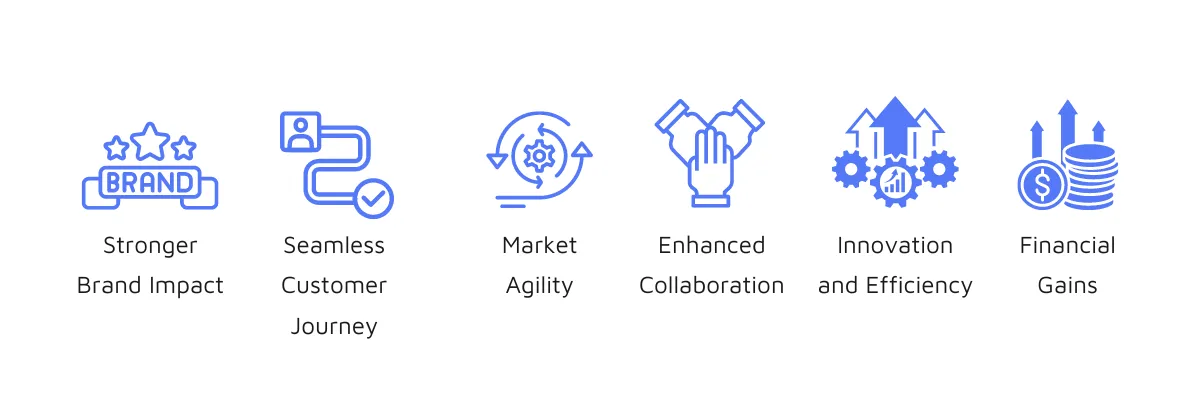
Moreover, a unified strategy fosters collaboration across departments, ensuring that all teams are working towards the same objectives. Marketing, sales, customer service, and product development teams can share insights and coordinate efforts more effectively. This collaboration leads to a more integrated approach to marketing, where all departments contribute to creating a cohesive customer experience. The synergy achieved through this collaboration not only enhances operational efficiency but also drives innovation and creativity within the organization.
The financial benefits of omnichannel marketing through a unified strategy are also substantial. Consistent messaging and a seamless customer journey increase the likelihood of conversions and repeat purchases. Customers who have positive and consistent experiences across all touchpoints are more likely to become loyal advocates for the brand. This loyalty translates into higher lifetime value, reduced customer acquisition costs, and increased revenue.
Choosing the Right Tools and Technologies
Selecting the right tools and technologies is pivotal to fully realizing the benefits of omnichannel marketing. The right Customer Relationship Management (CRM) systems and marketing automation platforms can streamline operations, enhance customer experience, and provide valuable insights. Integrating these tools ensures a seamless and cohesive experience across all touchpoints. This section delves into the importance of selecting CRM and marketing automation platforms and the integration of various tools to maximize the advantages of omnichannel marketing.
Selecting CRM and Marketing Automation Platforms
The foundation of an effective omnichannel marketing strategy lies in robust CRM and marketing automation platforms. These tools are essential for managing customer relationships, automating marketing tasks, and providing data-driven insights. Selecting the right platforms can significantly enhance the benefits of omnichannel marketing by enabling businesses to deliver personalized and consistent experiences across all channels.
A CRM system serves as the central repository for customer data, capturing interactions across all touchpoints. It consolidates customer information, including contact details, purchase history, preferences, and behavioral data. This comprehensive view of the customer allows businesses to segment their audience effectively, tailor marketing campaigns, and provide personalized experiences. When choosing a CRM platform, consider factors such as ease of use, scalability, integration capabilities, and advanced analytics features. Leading CRM platforms like Salesforce, HubSpot, and Microsoft Dynamics offer robust solutions that cater to the needs of businesses of all sizes.
Marketing automation platforms complement CRM systems by automating repetitive marketing tasks, such as email campaigns, social media postings, and lead nurturing. These platforms enable businesses to execute complex marketing strategies with minimal manual intervention, ensuring efficiency and consistency. Key features to look for in marketing automation platforms include multi-channel campaign management, lead scoring, segmentation, analytics, and personalization capabilities. Tools like Marketo, Pardot, and Mailchimp are popular choices that offer a wide range of functionalities to support omnichannel marketing efforts.
By selecting the right CRM and marketing automation platforms, businesses can streamline their marketing processes, improve efficiency, and deliver more personalized customer experiences. These tools provide the foundation for an integrated omnichannel strategy, enabling businesses to leverage the full advantages of omnichannel marketing.
Integrating Various Tools for a Seamless Experience
The integration of various tools and technologies is crucial for creating a seamless and cohesive customer experience. To fully harness the benefits of omnichannel marketing, businesses must ensure that their CRM and marketing automation platforms are integrated with other essential tools, such as eCommerce platforms, social media management tools, and customer service software. This integration ensures that all systems work together harmoniously, providing a unified view of the customer and enabling consistent interactions across all touchpoints.
Integration begins with establishing a unified data infrastructure that connects all relevant tools and platforms. This infrastructure should facilitate the seamless flow of data between systems, ensuring that customer information is updated in real-time across all channels. For example, integrating your CRM with your eCommerce platform allows you to track customer purchases and interactions, enabling personalized marketing campaigns based on buying behavior. Similarly, integrating your social media management tools with your CRM can provide insights into customer engagement on social platforms, helping you tailor your social media strategy to better meet customer needs.
APIs (Application Programming Interfaces) play a critical role in integrating various tools and platforms. APIs enable different software applications to communicate with each other, sharing data and functionalities. When selecting tools, ensure that they offer robust API capabilities and can easily integrate with your existing systems. For instance, leading CRM and marketing automation platforms provide APIs that facilitate integration with third-party applications, allowing businesses to create a cohesive tech ecosystem.
The integration of tools also extends to customer service and support systems. Integrating your CRM with customer service software, such as Zendesk or Freshdesk, ensures that customer interactions are tracked and managed efficiently. This integration enables customer service representatives to access complete customer profiles, including past interactions and purchase history, providing personalized and effective support. A seamless customer service experience contributes to higher customer satisfaction and loyalty, further enhancing the benefits of omnichannel marketing.
Benefits of Choosing the Right Tools and Technologies
Choosing the right tools and technologies and ensuring their integration provides numerous advantages of omnichannel marketing. Firstly, it enhances data accuracy and consistency across all channels, enabling businesses to deliver personalized and relevant experiences. A unified view of the customer allows for better segmentation, targeted marketing, and improved customer insights. This data-driven approach ensures that marketing efforts are more effective and efficient, leading to higher conversion rates and customer retention.
Secondly, the integration of tools streamlines operations, reducing manual tasks and improving overall efficiency. Automation of repetitive tasks frees up valuable time for marketing teams to focus on strategic initiatives, driving innovation and growth. The seamless flow of data between systems also reduces the risk of errors and discrepancies, ensuring that customer information is always up-to-date and accurate.
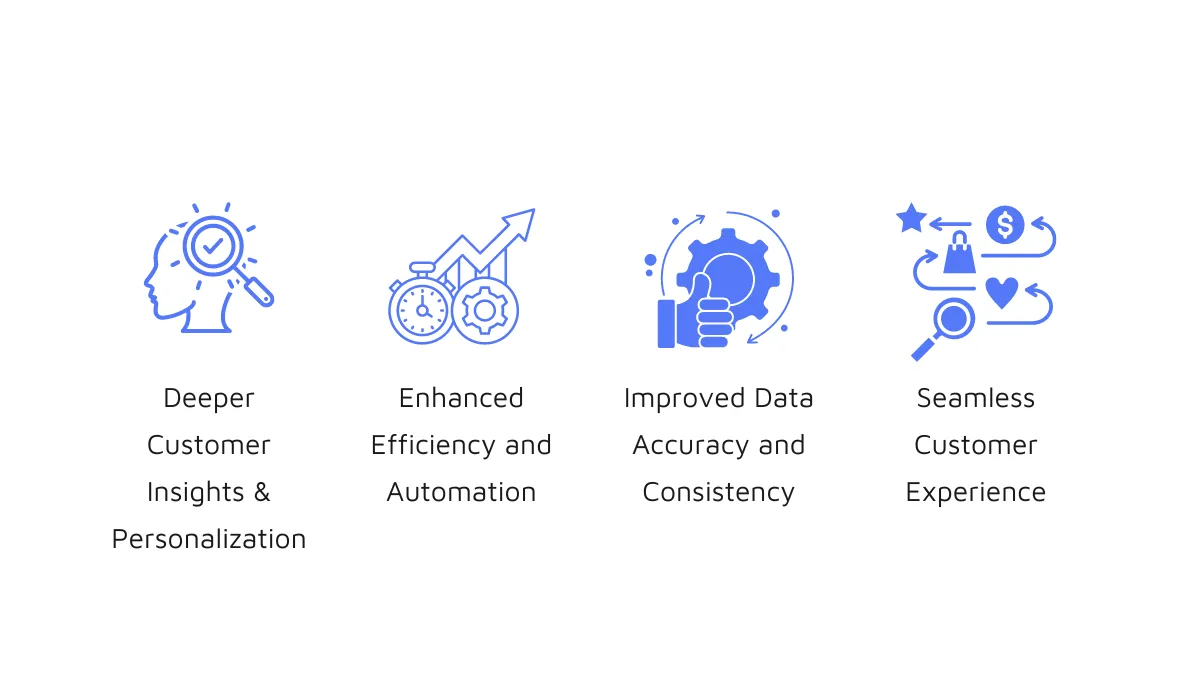
Lastly, a well-integrated tech ecosystem enhances the customer experience by providing consistent interactions across all touchpoints. Customers receive a cohesive and personalized experience, regardless of the channel they use to engage with the brand. This consistency builds trust and loyalty, as customers feel valued and understood by the brand. The benefits of omnichannel marketing are fully realized when all systems work together to create a seamless and engaging customer journey.
Training and Development
Training and development are critical components of implementing a successful omnichannel marketing strategy. Ensuring that staff are well-versed in omnichannel best practices and fostering a culture of continuous learning and adaptation are essential for maximizing the benefits of omnichannel marketing. This section explores the importance of comprehensive training programs and the need for ongoing professional development to stay competitive in the ever-evolving marketing landscape.
Ensuring Staff Are Trained in Omnichannel Best Practices
One of the primary benefits of omnichannel marketing is the seamless and integrated customer experience it offers. However, achieving this requires that all team members, from marketing to customer service, are knowledgeable about omnichannel strategies and best practices. Effective training programs ensure that staff understand the principles of omnichannel marketing, how to use relevant tools and technologies, and the importance of maintaining consistency across all channels.
Training should begin with an overview of the omnichannel approach, highlighting its key principles and the advantages of omnichannel marketing. Employees should understand the value of creating a unified customer journey, the importance of data integration, and how their roles contribute to the overall strategy. For instance, customer service representatives need to be aware of how interactions across different channels impact the customer experience and should be trained to provide consistent and personalized support.
Practical training on using CRM systems, marketing automation tools, and other relevant technologies is also crucial. Staff should be proficient in leveraging these tools to collect and analyze customer data, execute marketing campaigns, and track performance. Hands-on training sessions, workshops, and webinars can help employees become comfortable with the technologies and understand how to use them effectively to achieve omnichannel goals.
Additionally, role-specific training is essential to ensure that each team member can apply omnichannel best practices to their specific responsibilities. For example, marketing teams should be trained on how to create cohesive campaigns that integrate various channels, while sales teams should learn how to use customer data to personalize interactions and improve conversion rates. By tailoring training programs to the needs of different roles, businesses can ensure that all employees are equipped to contribute to the success of the omnichannel strategy.
Continuous Learning and Adaptation
The marketing landscape is constantly evolving, with new technologies, trends, and customer behaviors emerging regularly. To stay competitive and fully leverage the benefits of omnichannel marketing, businesses must foster a culture of continuous learning and adaptation. Ongoing professional development ensures that staff remain up-to-date with the latest best practices and can adapt their strategies to meet changing market demands.
Continuous learning can be facilitated through various means, including regular training sessions, access to industry resources, and opportunities for professional growth. Encourage employees to attend industry conferences, participate in online courses, and obtain relevant certifications. These opportunities provide valuable insights into the latest trends and innovations in omnichannel marketing, enabling staff to apply new knowledge and skills to their work.
Implementing a mentorship program can also support continuous learning and adaptation. Experienced team members can mentor newer employees, sharing their expertise and providing guidance on best practices. This knowledge transfer helps build a strong, cohesive team that is capable of executing the omnichannel strategy effectively.
In addition to formal training programs, encourage a culture of experimentation and innovation. Allow teams to test new ideas and approaches, analyze the results, and learn from their experiences. This iterative process of testing and learning helps businesses
adapt to changes quickly and continuously improve their omnichannel strategies. Regular feedback sessions and performance reviews can also provide valuable insights into areas for improvement and opportunities for further training.
To support continuous learning, it’s essential to stay informed about industry developments and emerging technologies. Subscribing to industry publications, joining professional associations, and participating in online forums can keep staff abreast of the latest trends and innovations. By fostering a culture of curiosity and continuous improvement, businesses can ensure that their omnichannel marketing strategies remain effective and relevant.
Benefits of Comprehensive Training and Continuous Learning
The benefits of omnichannel marketing are significantly enhanced when staff are well-trained and continuously developing their skills. Comprehensive training programs ensure that employees understand the core principles of omnichannel marketing, know how to use the necessary tools and technologies, and are aligned with the overall strategy. This knowledge and alignment lead to more effective and cohesive marketing efforts, which directly impact the customer experience and business performance.
Continuous learning and adaptation allow businesses to remain agile and responsive in a rapidly changing market. By staying up-to-date with the latest trends and best practices, staff can implement innovative strategies that keep the business competitive. This adaptability is crucial for maintaining a strong market position and achieving long-term success.
Moreover, investing in employee development fosters a positive work environment and enhances job satisfaction. Employees who feel supported in their professional growth are more engaged and motivated, leading to higher productivity and better performance. This investment in staff development ultimately translates into a more robust and effective omnichannel marketing strategy, maximizing the advantages of omnichannel marketing.
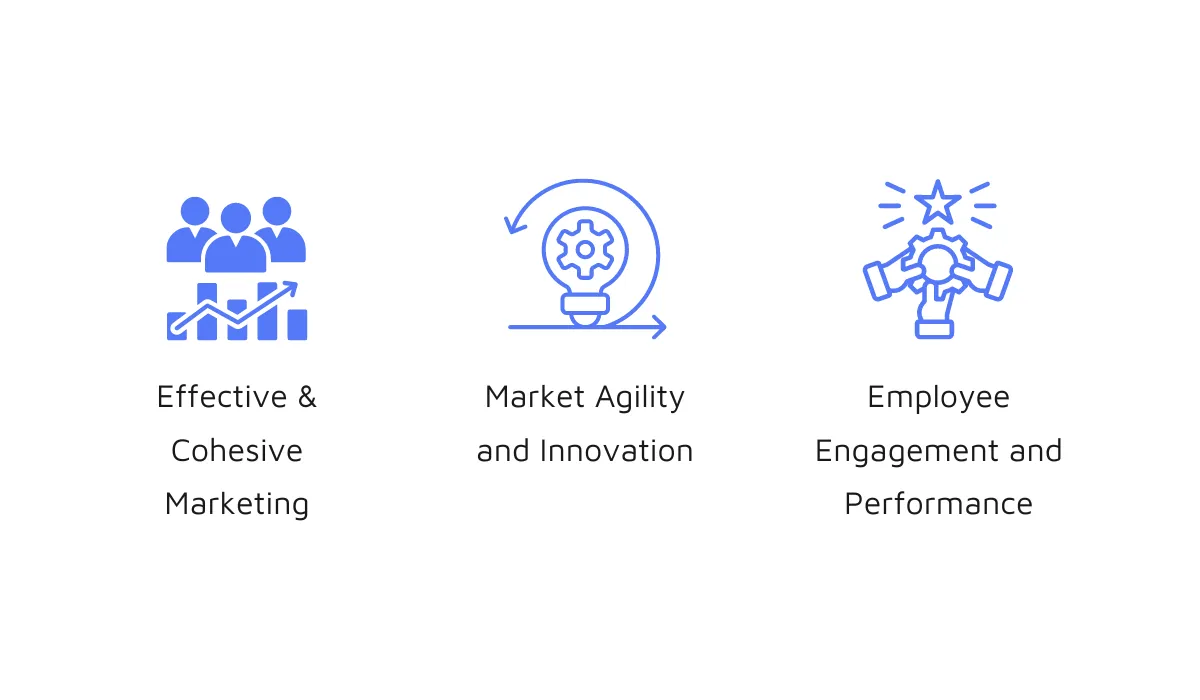
For example, consider a retail company implementing an omnichannel strategy that includes both online and offline channels. Through comprehensive training, staff learn how to use the CRM system to track customer interactions and preferences. Marketing teams are trained to create integrated campaigns that leverage data from both online and offline sources. Sales associates in physical stores learn how to access customer profiles to provide personalized recommendations. As a result, customers experience a seamless and personalized journey, whether they shop online or in-store, leading to higher satisfaction and loyalty.
Measuring Success
Measuring the success of your omnichannel marketing strategy is crucial to understanding its effectiveness and optimizing future efforts. By identifying key performance indicators (KPIs) and utilizing the right tools and methods for tracking and analyzing performance, businesses can gain valuable insights into their marketing initiatives. This section explores the importance of measuring success in omnichannel marketing, focusing on relevant KPIs and the tools and methods that help track and analyze performance, ultimately highlighting the benefits of omnichannel marketing and the advantages of omnichannel marketing.
Key Performance Indicators (KPIs) for Omnichannel Marketing
Key performance indicators (KPIs) are essential metrics that help businesses gauge the effectiveness of their omnichannel marketing strategies. These indicators provide a clear picture of how well your marketing efforts are performing and identify areas for improvement. The following are some critical KPIs for measuring the success of omnichannel marketing:
- Customer Acquisition Cost (CAC): This KPI measures the cost of acquiring a new customer through various channels. By tracking CAC, businesses can determine the efficiency of their marketing spend and identify the most cost-effective channels for customer acquisition.
- Customer Lifetime Value (CLV): CLV represents the total revenue a business expects to earn from a customer throughout their relationship. Higher CLV indicates successful customer retention and engagement strategies, emphasizing the benefits of omnichannel marketing in fostering long-term customer relationships.
- Conversion Rate: This KPI measures the percentage of visitors who complete a desired action, such as making a purchase or signing up for a newsletter. Tracking conversion rates across different channels helps businesses identify which channels are most effective at driving conversions.
- Retention Rate: Retention rate measures the percentage of customers who continue to engage with the brand over time. High retention rates indicate successful customer satisfaction and loyalty, showcasing the advantages of omnichannel marketing in maintaining long-term relationships.
- Net Promoter Score (NPS): NPS measures customer satisfaction and loyalty by asking customers how likely they are to recommend the brand to others. A high NPS indicates strong customer satisfaction and positive word-of-mouth, which are significant benefits of omnichannel marketing.
- Engagement Metrics: These metrics include click-through rates (CTR), time spent on site, pages per session, and social media engagement. Tracking these metrics provides insights into how customers interact with the brand across different channels, highlighting areas for improvement and optimization.
- Sales Metrics: These include total sales, average order value (AOV), and sales by channel. Tracking these metrics helps businesses understand the financial impact of their omnichannel marketing efforts and identify the most profitable channels.
- Return on Investment (ROI): ROI measures the overall profitability of marketing efforts by comparing the revenue generated to the cost of marketing activities. A positive ROI indicates that the omnichannel strategy is effective and delivers value.
Tools and Methods for Tracking and Analyzing Performance
To effectively measure the success of omnichannel marketing, businesses need to employ the right tools and methods for tracking and analyzing performance. These tools provide the data and insights necessary to evaluate KPIs and optimize marketing strategies. Here are some essential tools and methods:
- Customer Relationship Management (CRM) Systems: CRM systems, such as Salesforce, HubSpot, and Zoho, centralized customer data from various touchpoints, allowing businesses to track interactions, monitor engagement, and analyze customer behavior. CRM systems are crucial for measuring KPIs like CLV, retention rates, and NPS.
- Marketing Automation Platforms: Tools like Marketo, Pardot, and Mailchimp automate marketing tasks and track campaign performance across multiple channels. These platforms provide detailed analytics on conversion rates, engagement metrics, and ROI, helping businesses optimize their marketing efforts.
- Web Analytics Tools: Google Analytics, Adobe Analytics, and similar tools track website performance, including traffic sources, user behavior, and conversion rates. These insights help businesses understand how customers interact with their online channels and identify opportunities for improvement.
- Social Media Analytics: Tools like Hootsuite, Sprout Social, and Buffer provide detailed analytics on social media engagement, including likes, shares, comments, and click-through rates. These insights help businesses measure the effectiveness of their social media strategies and optimize content for better engagement.
- Surveys and Feedback Tools: Tools like SurveyMonkey, Qualtrics, and Net Promoter Score (NPS) surveys gather direct feedback from customers, providing valuable insights into customer satisfaction and loyalty. Analyzing this feedback helps businesses identify areas for improvement and enhance the customer experience.
- eCommerce Analytics: Platforms like Shopify, Magento, and WooCommerce offer built-in analytics that track sales performance, average order value, and customer behavior on eCommerce sites. These insights are crucial for measuring the financial impact of omnichannel marketing efforts.
- Business Intelligence (BI) Tools: BI tools like Tableau, Power BI, and Looker provide advanced data visualization and analytics capabilities, enabling businesses to analyze complex data sets and gain deeper insights into their marketing performance.
Benefits of Measuring Success in Omnichannel Marketing
The benefits of omnichannel marketing are fully realized when businesses actively measure and analyze their performance. By tracking relevant KPIs and utilizing the right tools and methods, businesses can gain a comprehensive understanding of their marketing effectiveness and identify areas for improvement. This data-driven approach enables businesses to optimize their strategies, allocate resources more efficiently, and achieve better results.
Measuring success also provides a clear picture of the advantages of omnichannel marketing in enhancing customer experience, driving engagement, and increasing revenue. By continuously monitoring and analyzing performance, businesses can adapt their strategies to meet changing customer needs and market conditions. This agility is crucial in a competitive landscape, where staying ahead requires constant innovation and improvement.
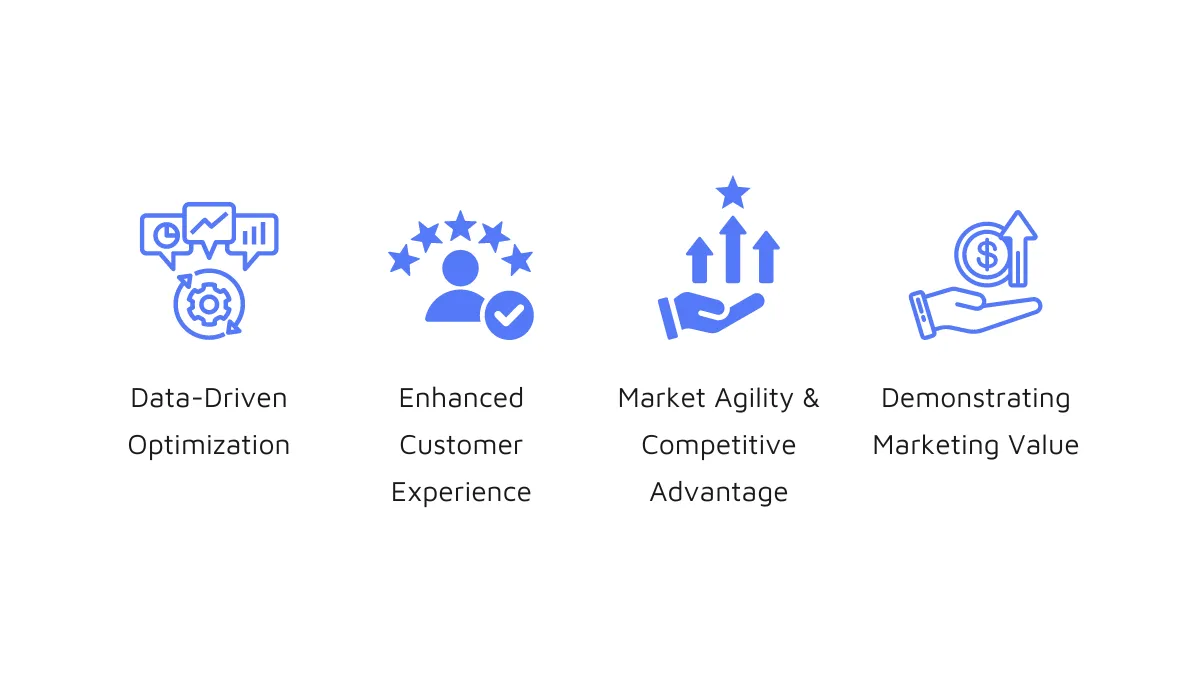
Moreover, measuring success helps businesses demonstrate the value of their marketing efforts to stakeholders. By providing concrete data and insights, businesses can justify marketing investments, secure additional resources, and gain support for future initiatives. This transparency and accountability are essential for building trust and driving long-term growth.
In conclusion,
Adopting an omnichannel approach is no longer optional but essential in today’s business environment. The ability to provide a seamless, consistent, and personalized customer journey across all touchpoints is critical for meeting the evolving expectations of consumers. Moreover, the integration of various channels, supported by robust data analytics, empowers businesses to make informed decisions, optimize their marketing efforts, and achieve sustainable growth. The advantages of omnichannel marketing are clear: it not only enhances customer satisfaction and loyalty but also drives significant financial and operational benefits.
By investing in the right tools and technologies, ensuring comprehensive training and continuous learning, and meticulously measuring success, businesses can overcome common challenges and fully leverage the benefits of omnichannel marketing. The journey to implementing an omnichannel strategy may be complex, but the rewards are substantial. By committing to an omnichannel approach, businesses can build stronger connections with their customers, foster long-term loyalty, and achieve unparalleled success in today’s dynamic marketplace.


